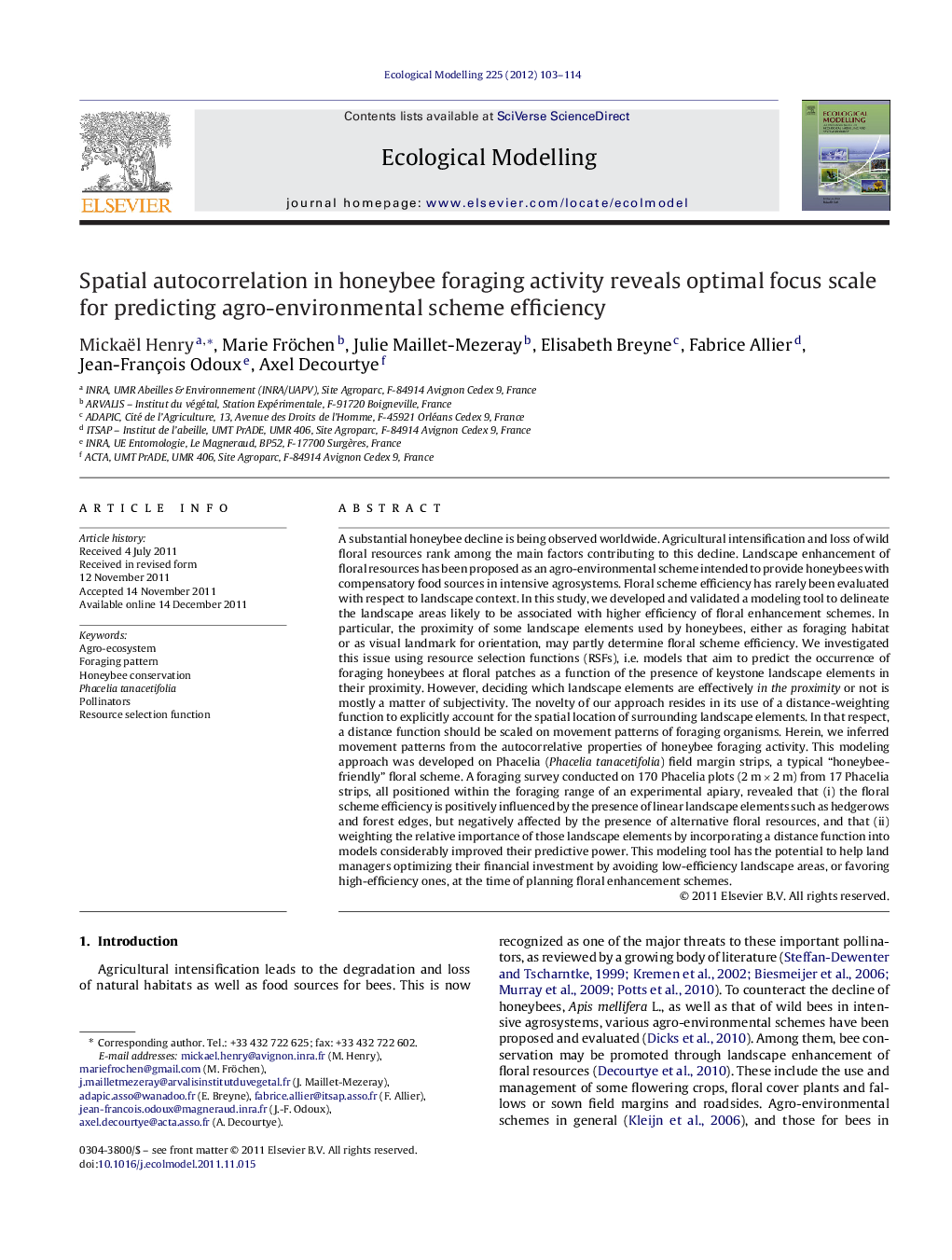| کد مقاله | کد نشریه | سال انتشار | مقاله انگلیسی | نسخه تمام متن |
|---|---|---|---|---|
| 4376604 | 1617518 | 2012 | 12 صفحه PDF | دانلود رایگان |

A substantial honeybee decline is being observed worldwide. Agricultural intensification and loss of wild floral resources rank among the main factors contributing to this decline. Landscape enhancement of floral resources has been proposed as an agro-environmental scheme intended to provide honeybees with compensatory food sources in intensive agrosystems. Floral scheme efficiency has rarely been evaluated with respect to landscape context. In this study, we developed and validated a modeling tool to delineate the landscape areas likely to be associated with higher efficiency of floral enhancement schemes. In particular, the proximity of some landscape elements used by honeybees, either as foraging habitat or as visual landmark for orientation, may partly determine floral scheme efficiency. We investigated this issue using resource selection functions (RSFs), i.e. models that aim to predict the occurrence of foraging honeybees at floral patches as a function of the presence of keystone landscape elements in their proximity. However, deciding which landscape elements are effectively in the proximity or not is mostly a matter of subjectivity. The novelty of our approach resides in its use of a distance-weighting function to explicitly account for the spatial location of surrounding landscape elements. In that respect, a distance function should be scaled on movement patterns of foraging organisms. Herein, we inferred movement patterns from the autocorrelative properties of honeybee foraging activity. This modeling approach was developed on Phacelia (Phacelia tanacetifolia) field margin strips, a typical “honeybee-friendly” floral scheme. A foraging survey conducted on 170 Phacelia plots (2 m × 2 m) from 17 Phacelia strips, all positioned within the foraging range of an experimental apiary, revealed that (i) the floral scheme efficiency is positively influenced by the presence of linear landscape elements such as hedgerows and forest edges, but negatively affected by the presence of alternative floral resources, and that (ii) weighting the relative importance of those landscape elements by incorporating a distance function into models considerably improved their predictive power. This modeling tool has the potential to help land managers optimizing their financial investment by avoiding low-efficiency landscape areas, or favoring high-efficiency ones, at the time of planning floral enhancement schemes.
► Honeybee floral enhancement schemes compensate for seasonal food shortage.
► The efficiency of honeybee floral schemes varies with landscape context.
► We developed spatially explicit models to predict floral scheme efficiency.
► Scaling model focus scale on foraging spatial autocorrelation raises predictive power.
► Model-based landscape planning could increase tenfold the honeybee scheme efficiency.
Journal: Ecological Modelling - Volume 225, 24 January 2012, Pages 103–114